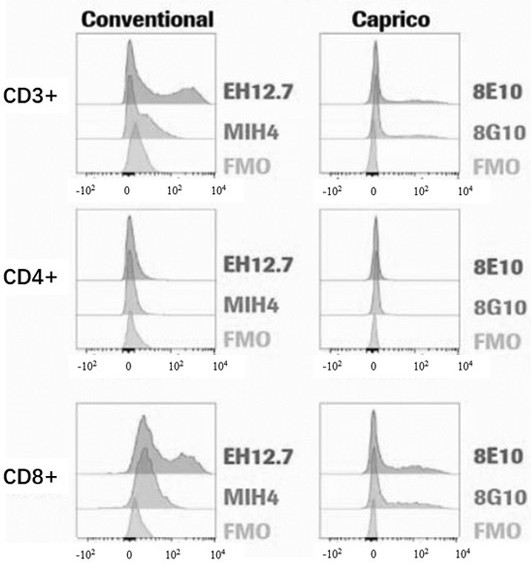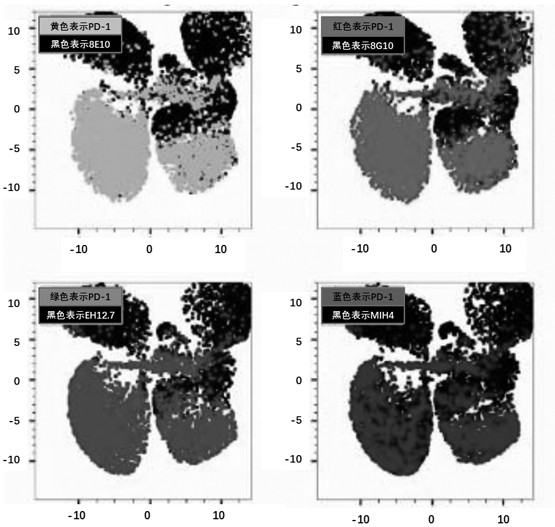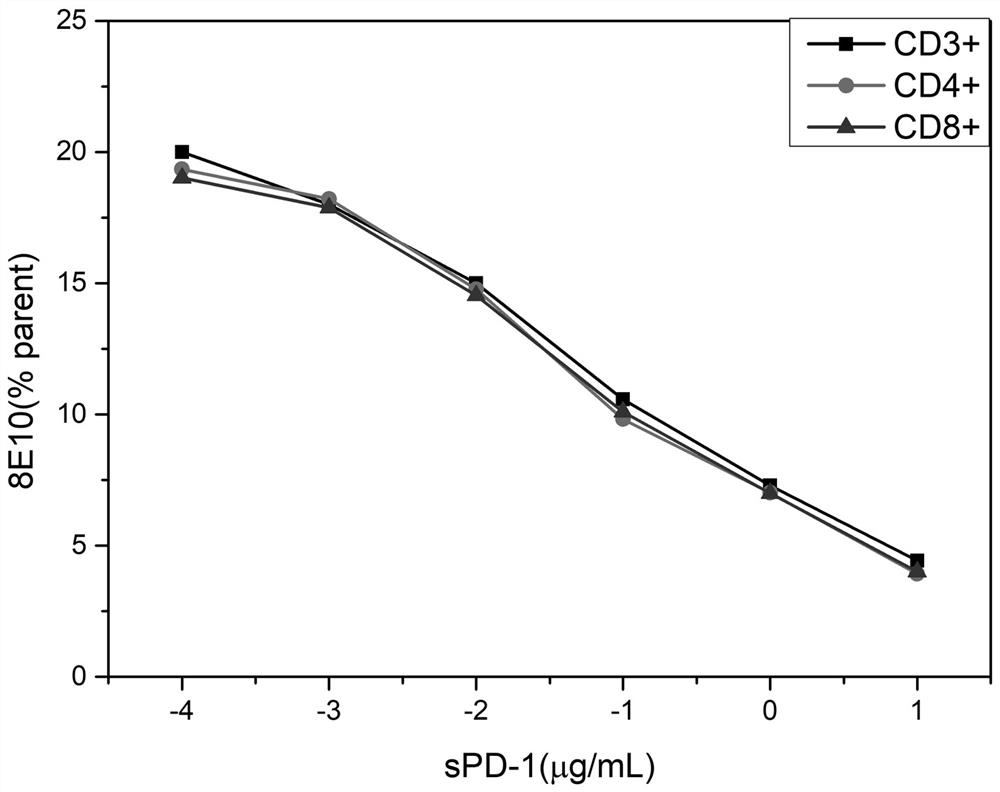Preparation method of antibodies
A technology of antibody and monoclonal antibody, applied in the field of biological protein detection, can solve the problems of large steric hindrance, unpredictability, unfavorable observation, etc., and achieve good results
- Summary
- Abstract
- Description
- Claims
- Application Information
AI Technical Summary
Problems solved by technology
Method used
Image
Examples
Embodiment 1
[0037] 1. Preparation of PD-1 immunogen:
[0038] (1) Cell culture: 293T cells were cultured in RPMI-1640 medium containing 10% fetal bovine serum in an incubator at 37°C and 5% CO2.
[0039] (2) Gene PCR amplification: Extraction of total cellular RNA and RT-PCR respectively extract 13 μg RNA from normal PBMC, reverse transcribe to obtain cDNA, and use cDNA as template to amplify to obtain PD-1 gene fragment; Forward primer: TATGGATTCGCCACCATGCAGATCCCACAGGCGC, Reverse primer : TATGTCGACTCAGAGGGGCCAAGAG; PCR reaction conditions: 94°C, 2min, 94°C, 45s, 57°C, 45s, 72°C, 90s, 30 cycles, 72°C, 10min. The kit recovers fragments.
[0040](3) Construction and identification of pCBM-CMV-PD1 eukaryotic vector: the product was recovered after double digestion of pCBM, CMV and plasmid pCDNA3.1-MCS with restriction endonuclease BamhI and salI; the product was digested with TaKaRaDNALigaionKit After fragment ligation, transformed 293T cells, cultured overnight at 37°C, transfected SP2 / 0 ...
Embodiment 2
[0046] 1. Preparation of PD-L1 immunogen:
[0047] (1) Cell culture: 293T cells were cultured in RPMI-1640 medium containing 10% fetal bovine serum in an incubator at 37°C and 5% CO2.
[0048] (2) Gene PCR amplification: Extraction of total cellular RNA and RT-PCR respectively extract 13 μg RNA from normal PBMC, reverse transcribe to obtain cDNA, and use cDNA as template to amplify to obtain PD-L1 gene fragment; Forward primer: ATAAGATCTGCCACCATGAGGATATTTGCTGTCTTTAT, Reverse primer : ATAGTCGACTTACGTCTCTCCAAATGTGT; PCR reaction conditions: 94°C, 2min, 94°C, 45s, 57°C, 45s, 72°C, 90s, 30 cycles, 72°C, 10min. The kit recovers fragments.
[0049] (3) Construction and identification of pCBM-CMV-PDL1 eukaryotic vector: Recover the products after double digestion of pCBM, CMV and plasmid pCDNA3.1-MCS with restriction endonucleases bgl2 and salI; digest with TaKaRaDNALigaionKit After fragment ligation, transformed 293T cells, cultured overnight at 37°C, transfected SP2 / 0 and HEK293 ...
Embodiment 3
[0055] Antibody and Dye Conjugation Methods
[0056] (1) Take an appropriate amount of purified antibody of the present invention, dilute the protein concentration of the antibody solution to 20mg / ml with 0.025mol / L pH9.0 carbonate buffer, and place the solution in an ice bath;
[0057] (2) Take a fluorescent dye equivalent to 1 / 100 of the antibody protein and dissolve it in 0.5mol / L pH9.5 carbonate buffer with 1 / 10 of the antibody solution (the solution should be prepared and used immediately);
[0058] (3) Slowly drop the prepared dye solution into the antibody solution under the slow stirring of the electromagnetic stirrer, pay attention to avoid the generation of air bubbles, and add it within about 5-10 minutes;
[0059] (4) After sealing the container with a stopper, place it together with an electromagnetic stirrer at 4°C, and continue stirring slowly to allow the fluorescent dye to bind (couple) to the antibody for 12-18 hours;
[0060] (5) Centrifuge the conjugate (3...
PUM
 Login to View More
Login to View More Abstract
Description
Claims
Application Information
 Login to View More
Login to View More - Generate Ideas
- Intellectual Property
- Life Sciences
- Materials
- Tech Scout
- Unparalleled Data Quality
- Higher Quality Content
- 60% Fewer Hallucinations
Browse by: Latest US Patents, China's latest patents, Technical Efficacy Thesaurus, Application Domain, Technology Topic, Popular Technical Reports.
© 2025 PatSnap. All rights reserved.Legal|Privacy policy|Modern Slavery Act Transparency Statement|Sitemap|About US| Contact US: help@patsnap.com



